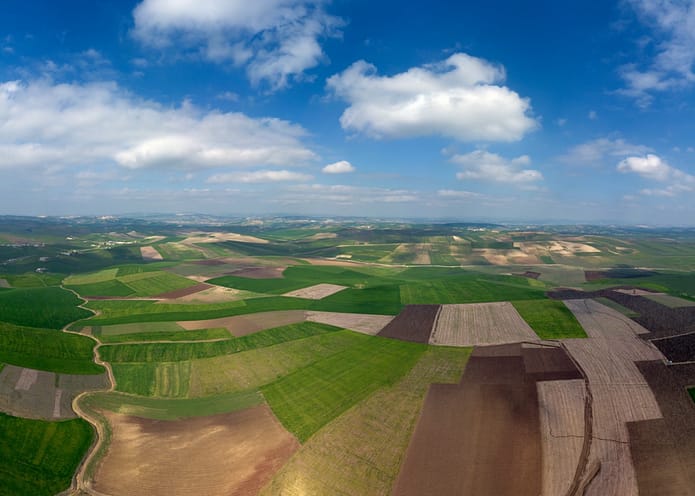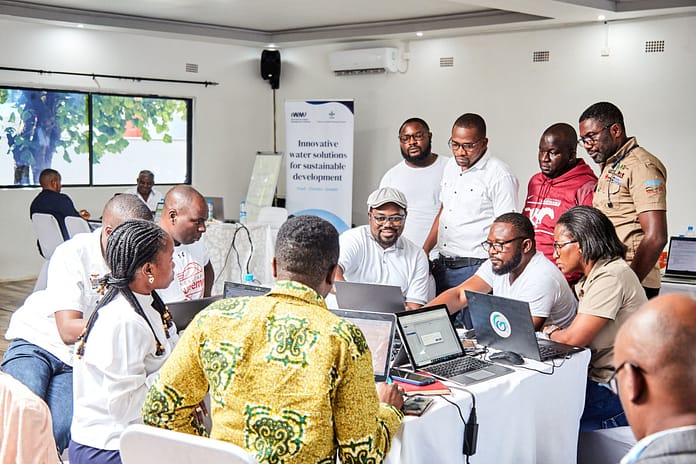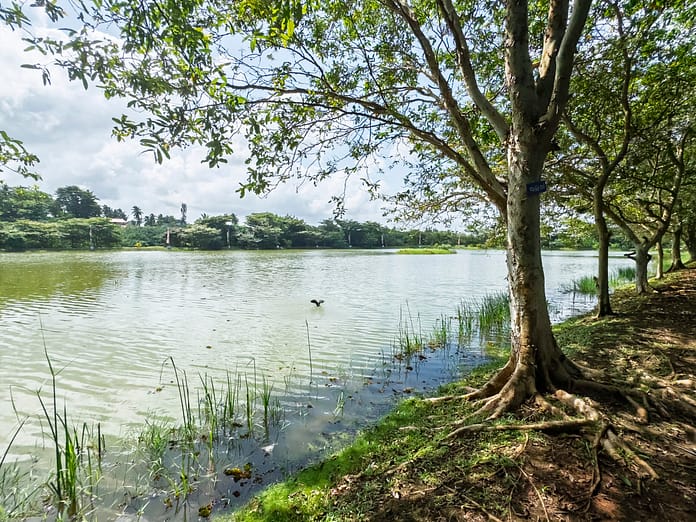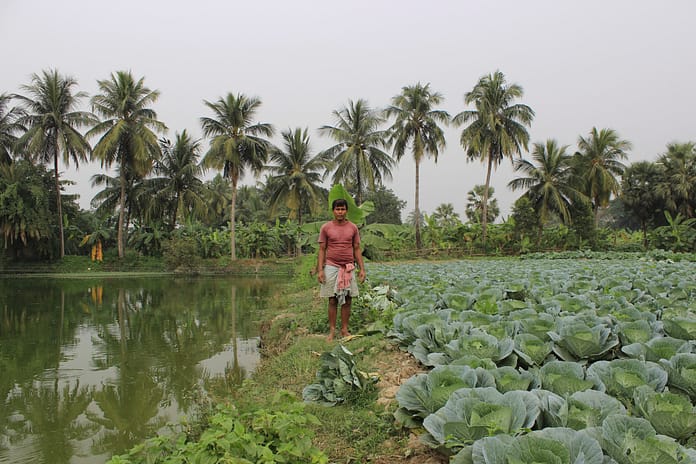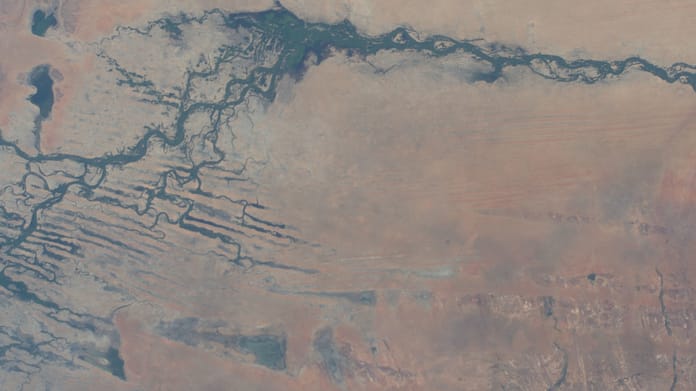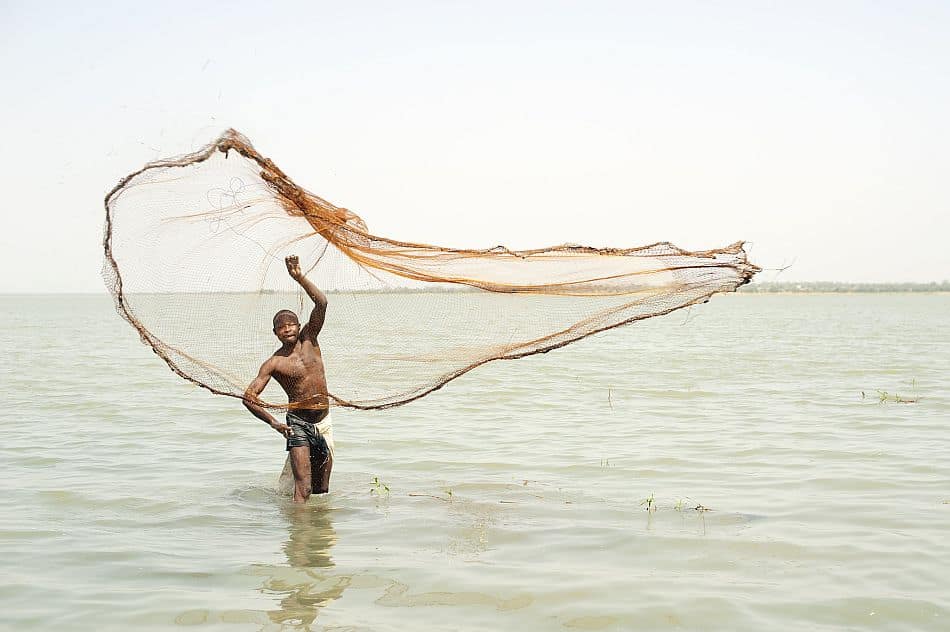
In semi-arid regions like northern Ghana, small dams and reservoirs serve as critical water infrastructure for sustaining agricultural livelihoods and rural communities. These water bodies provide essential buffering against seasonal rainfall variability and drought, enabling year-round access to water resources that would otherwise be unavailable during extended dry periods.
These small reservoirs present great opportunities for multi-purpose water use — serving irrigation needs, providing livestock watering points, supporting domestic water supply and enabling aquatic food production. When effectively utilized, they can significantly enhance household income, improve nutrition and strengthen community resilience against climate variability.
However, a critical knowledge gap has emerged: despite the substantial investment in small reservoir infrastructure, comprehensive data is limited on their potential for diverse applications like aquaculture and irrigation. Understanding how to maximize the benefits from these water resources has become essential for realizing their full potential in transforming rural livelihoods and food security.
The making of the Small Reservoirs Portal
The CGIAR Sustainable Animal and Aquatic Foods (SAAF) Program integrates livestock and aquatic food systems to address shared challenges of rising demand, climate change and food safety through coordinated, context-specific innovations. SAAF links productivity-enhancing technologies with inclusive market systems and gender-responsive strategies.
In northern Ghana, SAAF builds on previous aquatic foods research to tackle a critical scaling question: can successful community-led aquaculture pilots be scaled across hundreds of small reservoirs in northern Ghana?
International Water Management Institute (IWMI) researchers and partners employed an integrated methodology to answer this question. About 2,000 reservoirs were mapped using 2018-2024 satellite imagery. A total of 900 reservoirs were surveyed for detailed information on water use, quality, infrastructure and existing aquaculture activities. Expert consultations helped develop multi-criteria assessment frameworks integrating social, economic and biophysical indicators.
IWMI researchers found that approximately 27% of surveyed reservoirs have high to very high suitability for aquaculture development. The results reveal where community-led aquaculture is most likely to succeed, strengthening the pathway for scaling and outlining how successful pilots can be replicated across hundreds of reservoirs in northern Ghana.
The resulting database provides evidence-based guidance that government organizations, NGOs and private sector actors can use to make informed investment decisions and assess success potential — exemplifying SAAF’s goal of creating scalable solutions for sustainable food system transformation.
Transforming water management with real-time data
To share this database and provide user-friendly access to stakeholders, IWMI developed the Small Reservoir Portal. The portal features over 2,000 small reservoirs in the five northernmost regions of Ghana: North East, Northern, Savannah, Upper East and Upper West. Users can search and filter reservoirs on the portal and instantly see key information — such as water availability, infrastructure and aquaculture potential — displayed in interactive maps, graphs and tables. For example, using the Small Reservoir Portal, a district fisheries officer can identify reservoirs in their region that maintain water during the dry season and have strong aquaculture suitability scores.
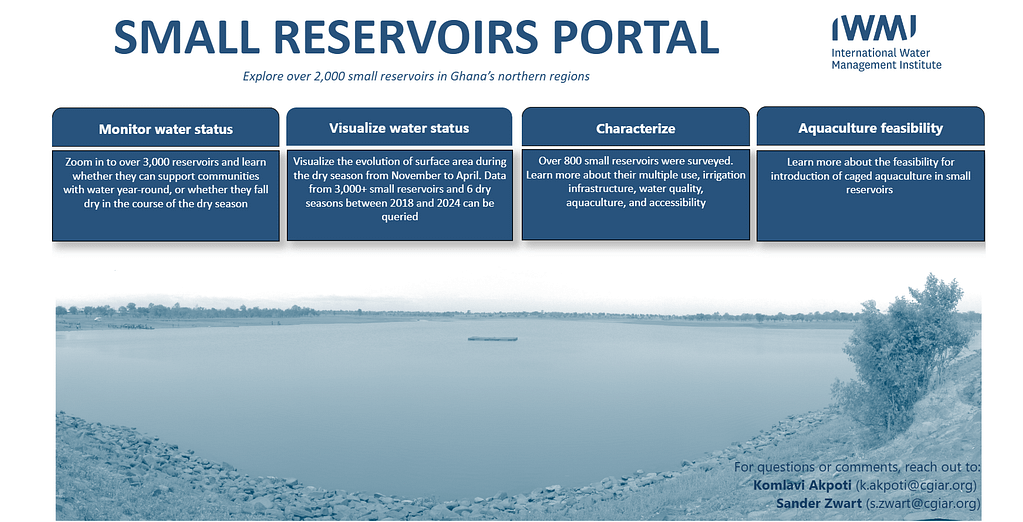
Inside the Small Reservoirs Portal
The Small Reservoirs Portal provides several essential features that make it an invaluable tool for water resource management and aquaculture planning. Users can monitor water status by zooming into individual reservoirs to assess their capacity for year-round water availability or identify patterns of seasonal drying.
The portal also visualizes water dynamics by analyzing dry-season surface area changes from 2018 to 2024 across over 2,000 reservoirs. These visualizations highlight variations in water availability. Additionally, the Small Reservoirs Portal characterizes reservoirs using data from over 900 locations gathered through surveys and expert workshops. This information provides comprehensive details on reservoir uses.
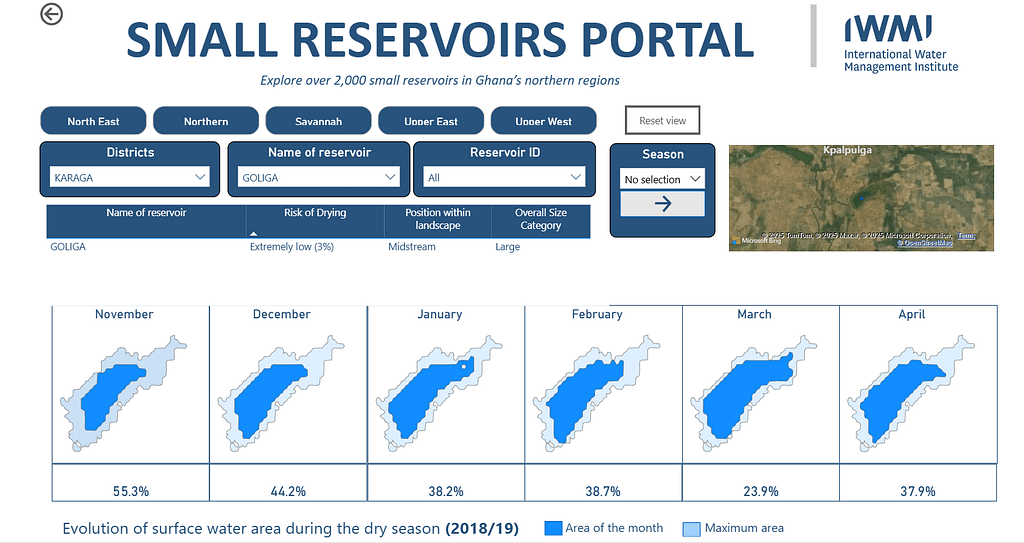
For example, a district planning officer or fisheries extension agent can quickly identify reservoirs that consistently retain water throughout the dry season — prioritizing them for aquaculture investment and community livelihood support — while directing infrastructure upgrades or watershed management interventions to reservoirs that show recurring drying patterns. This helps government agencies, NGOs and private partners plan across multiple uses — ensuring reservoirs that support irrigation, livestock, domestic water supply and aquaculture are targeted appropriately based on water reliability and community needs.
Another key aspect of the Small Reservoir Portal is its evaluation of aquaculture feasibility. This feature integrates various data points, from irrigation practices like canals, pumping systems and crop patterns to aquaculture parameters like cages and cultivated fish species.
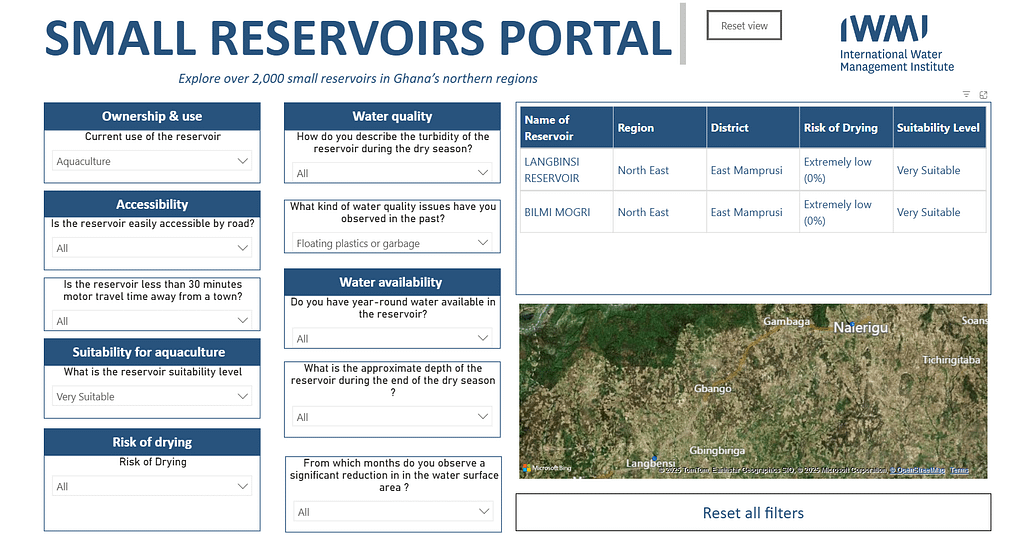
The Small Reservoir Portal also examines water quality through observations of riparian vegetation, sedimentation, turbidity and chemical usage. Furthermore, the portal assesses water availability by tracking year-round water levels, reservoir depth and seasonal surface area reductions. Accessibility factors, including proximity to roads, villages, towns and markets, are also considered.
These combined features make the Small Reservoir Portal a comprehensive and user-friendly tool for water resource planning and decision-making.
With its replicable methodology and open-access design, Ghana’s Small Reservoir Portal offers a scalable framework for assessing West Africa’s extensive small reservoir networks. Laying the groundwork for evidence-based, sustainable aquaculture development in the region.



